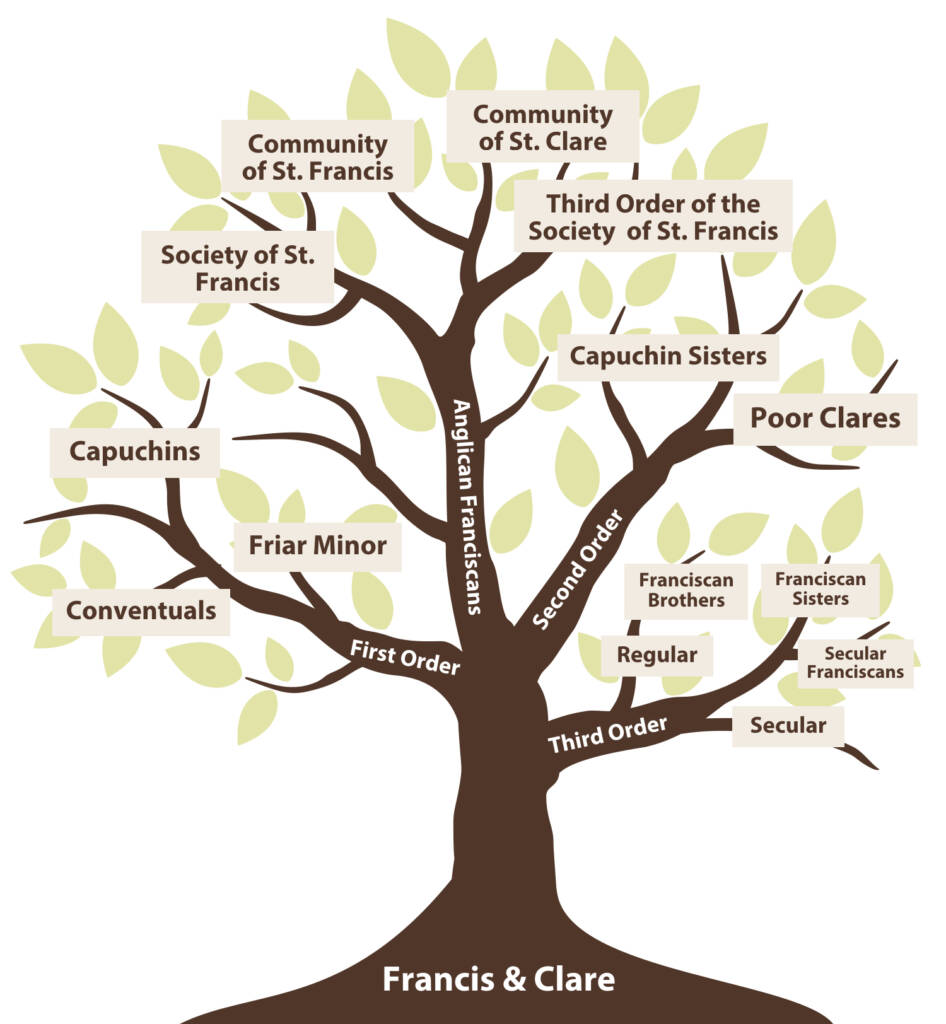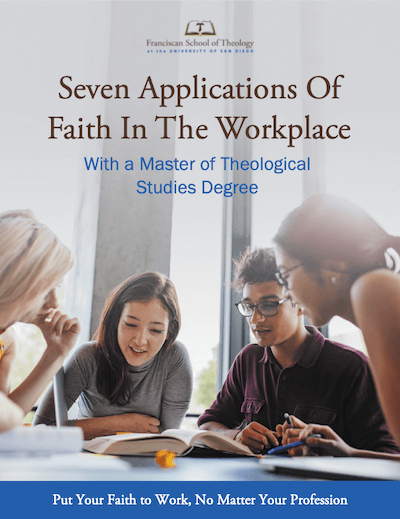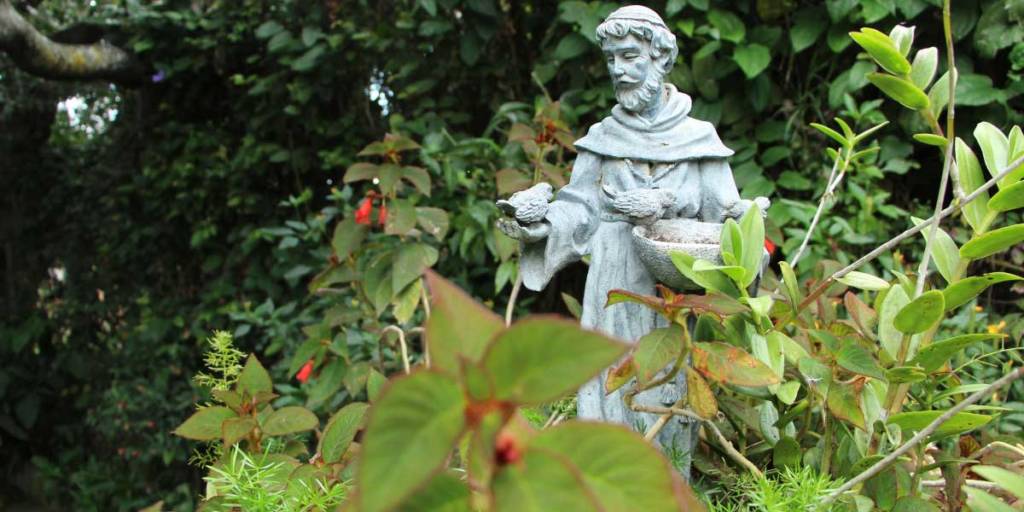When Catholics talk about charism, the word might mean different things in different contexts. For some, it can refer to specific religious orders; to others, it can refer to gifts bestowed by the Holy Spirit through Catholic sacraments.
To understand Catholic charisms, we can think about them like we think about holiday traditions: people all over the world observe Easter and Christmas, but every family or community will have their own holiday traditions with their own origin stories.
Do the words Fransciscan, Benedictine, Dominican, or Jesuit sound familiar? If so, then you’ve encountered a Catholic charism.
What Is a Charism?
In Article 799 of the Catechism of the Catholic Church, charisms are defined as “graces of the Holy Spirit which directly or indirectly benefit the Church.” In other words, a charism is a gift, talent, power, or grace through which Catholics interpret, practice, and spread the Gospel.
For example, vowed members of certain Catholic orders are known for being excellent teachers, for their healing touch, or for their craftsmanship. In addition to the services they provide for others, Catholic religious orders are also recognized by the unique way they live out their faith, such as taking voluntary vows of obedience, poverty, chastity, or silence, or dedicating themselves to missionary activity.
When religious orders like the Poor Clares or the Jesuits talk about charisms, they mean the specific gift or characteristic that inspired their founder to gather others to celebrate and spread the word of God. Religious orders like these often establish or sponsor institutions that reflect their particular charism, such as schools and universities, hospitals, food pantries, retreat centers, nature preserves, social services, or libraries.
All individuals baptized in the Catholic Church possess one or more charism that enables them to be Christ’s messengers, such as compassion or a heart of service. When members of religious orders and lay people work together in the same institutions (including the church), both parties are able to rejoice in and learn about their charism from one another, living out their spiritual gifts in a profound collaboration.
For an example of this, think back to the holiday tradition comparison. If someone marries into a family that eats a very specific type of pastry at Christmastime, the new family member may learn the food’s origin story, how to prepare it, and what it symbolizes for the family when they make it year after year. Likewise, the family sees how the new member interprets and experiences the tradition, answers any questions they have, and perhaps finds a new way to prepare the pastry to help future generations appreciate it. This dialogue ensures that the family’s traditions and stories live on past their individual lifetimes.
Defining Characteristics of a Charism
The Greek word “charisma” appears in the Christian New Testament and means “favor” or “gift.” In a religious context, a charism is a special ability bestowed upon all Christians by the Holy Spirit, and is meant to be given away to others (unlike the Seven Gifts of the Holy Spirit, which are meant to support Christians in their personal growth in holiness).
A charism is the driving force that gives religious communities their purpose and informs the way they live out their faith. Charisms are typically apparent in the origin story of a religious order. For example, St. Francis’ renunciation of worldly possessions in solidarity with the poor and sick provides the basis for the Franciscans’ commitment to asceticism in removing barriers to faith. This type of commitment may manifest among followers as a specific profession, daily routines, or mode of dress. A charism may also appear in subtler ways:
- When using the gift, individuals can experience a profound sense of peace and joy.
- Any efforts made when using the gift can lead to unusually effective results, such as an uncanny healing touch or ability to calm others.
- Others may recognize the gift’s presence, whether directly or indirectly, because of its potency.
Charism Comparison: How Does Each Charism Approach Life?
This is by no means a comprehensive exploration of all the Catholic charisms and orders, but rather a brief introduction to the most well-known charisms, their founders, and their spiritual gifts. Those not introduced here include the Cistercians, the Sisters of St. Joseph, and the Carthusians.
Benedictine
Around 500 A.D., Benedict of Nursia left his schooling in Rome and entered into a hermetic life. His devotion to solitude and contemplation naturally drew people to him, and he eventually founded a monastery that would influence all other forms of Western monastic life. His sister Scholastica later founded the first convent for Benedictine nuns.
St. Benedict committed his teachings to his “Rule for Monks,” a short book of practical regulations governing the lives of his followers. Monks and nuns in the Order of Saint Benedict are to live out Jesus’ mandate to “pray always,” serve God and their fellows, and take three vows:
- The vow of Stability: To remain in one community of fellow monks or nuns for life.
- The vow of ongoing, perpetual Conversion: To follow a specific code of regulations governing monastic life.
- The vow of Obedience: To acknowledge the leadership of an abbot or abbess, the superior of an abbey, monastery or convent.
Benedictine monks and nuns devote themselves to work at their monastery, whether by farming, gardening, making food, or providing hospitality to visitors.
Jesuit
Founded in the 16th century by St. Ignatius of Loyola, followers of the Society of Jesus — or the Jesuits — are committed to finding God in all things. St. Ignatius himself was a Spanish nobleman who experienced a radical conversion, after which he invited others to join him as “contemplatives in action,” bringing God’s word to the farthest corners of the globe. Jesuit men and women are compelled by their unique gifts to travel the world, going wherever they are called by the Pope to inspire peace and fight for justice (they are sometimes called “God’s soldiers”).
The Jesuits are one of the most well-known religious orders, since they are on a perpetual worldwide mission to minister to people from every social class. Vowed members commit to poverty, chastity, and obedience, and abide by St. Ignatius’ recommendations for divine service established in his Jesuit Constitutions. The order also sponsors the Jesuit Volunteer Corps, which engages men and women in community service around the globe.
Carmelite
The Carmelite order is unique in that followers refer to the Old Testament prophet Elijah and his disciple Elisha as the “fathers” of the order and the Virgin Mary as its spiritual center. Following the establishment of the order in the mid-12th century, the first Carmelites lived as hermits on the slopes of Mount Carmel in Israel before dispersing throughout Western Europe following the Crusades.
Perhaps the most well-known figure in the Carmelite tradition is St. Teresa of Ávila, who founded the order of Discalced (barefoot) Carmelite Nuns in the 1500s, emphasizing austerity as a connection to the original hermits of Mount Carmel. Today, cloistered, non-cloistered, and secular orders of Carmelite men and women dedicate themselves to teaching, missionary work, care of the sick, and other charitable endeavors.
Ursuline
The Ursulines are a global sisterhood founded by St. Angela Merici and dedicated to “education in its varied forms, for the sake of evangelization.” Born in the late 15th century, St. Angela lived most of her life in northern Italy as a member of the Third Order of St. Francis, only founding her own Company of Saint Ursula in the final years of her life. Today’s Ursuline sisters model their devotion after that of St. Angela and patroness St. Ursula, embodying Christ’s love in their expression of service to others. The Ursulines are known worldwide for establishing educational communities for women and girls.
Augustinian
Augistinians live according to the Rule of St. Augustine, a list of guidelines written by Augustine of Hippo in the 5th century. Inspired by the life of St. Augustine himself, Augustinians dedicate themselves to education and the constant search for knowledge and truth. Order members share everything and serve God by performing acts of charity for each other and their neighbors.
Friars and nuns in the Order of St. Augustine live out their faith according to three elements:
- A deep interior life focused on the constant search for God
- The practical love of one’s neighbor
- The constant pursuit of truth
Dominican
Founded in the 13th century by St. Dominic de Guzman, a Spanish priest who followed the Rule of St. Augustine, Dominican men and women embrace a life of simplicity, poverty, and preaching the Word of God whenever possible by any means available. Also called the Order of Preachers, Dominicans hold academic study in high regard and are known for their pursuit and facilitation of education.
Life in the Dominican Order is supported by four pillars:
- Prayer
- Study
- Community life
- Preaching
Society of the Sacred Heart
In 1800 in Paris, a small group of women led by St. Madeleine Sophie Barat established themselves as the Ladies of Christian Instruction, with the intention of providing education to young girls in the wake of the French Revolution. St. Rose Philippine Duchesne brought what would become the Society of the Sacred Heart to America in 1818, establishing the first free school west of the Mississippi. The Society would go on to found institutions of higher learning for women across the United States and Canada — including the University of San Diego.
The Society’s primary charism is the gift of education, but the sisters also promote traveling to “new geographic and existential peripheries,” discerning in silence, and living in solidarity within the sisterhood and in the wider world.
Franciscan
Following an extraordinary conversion in the early days of the 13th century, Giovanni di Pietro di Bernardone (soon to be known as St. Francis) became a devoted preacher of God’s word, inspiring others to live simply and serve the poor and destitute.
To this day, vowed Franciscans embrace a life of poverty and asceticism, sharing all worldly things like food, shelter, and clothing with other Order members. This renunciation of personal possessions is meant to dissolve any barriers to God and strengthen one’s reliance on Him for all spiritual nourishment. Franciscans are known for their lives of active service and are often heavily involved in community outreach and social services like homeless shelters, transitional housing, and food pantries.
The Franciscan family is incredibly multifaceted, with orders for vowed men, women, and lay people. The three most well-known orders are the all-male Order of Friars Minor (often simply called the Franciscans), the all-female Order of St. Clare (or the Poor Clares), and the Third Order of Saint Francis, which accepts men, women, and secular laity.
Organizations that support and foster Franciscan lay ministry include Franciscan Volunteer Ministry and Franciscan Mission Service. Still more branches, consecrated and otherwise, make up the wide Franciscan family. There are expressions of Franciscanism to suit every type of calling and lifestyle preference.

Franciscans are a notably welcoming group, acknowledging each person’s lived experience and seeking joy in all of creation. As devoted academics, contemporary Franciscans perpetually meditate on and respond to three theological questions:
1. What does it mean to be human?
2. What are the values and roles of social institutions?
3. How are we to deal with differences or otherness?
History plays an important role in Franciscan life, especially when it comes to St. Francis’ charism and conversion; but the various orders are committed to living out the Catholic tradition in the context of modern society.
As Father Michael Blastic, OFM writes for The Franciscan Tradition, “The traditional understanding of progress in the spiritual life had been described in a monastic pattern of reading, meditation, prayer, and contemplation […] However, in the twelfth and thirteenth centuries…advances in learning heralded the birth of a new worldview…
“Francis and Clare arrived on the scene at the cusp of this development. Their life experiences led to a new understanding of the Christian life and to a corresponding evangelical pattern of perfection that did not presume separation from the world, but rather insertion into it as mediators of God’s presence and goodness.”
Discovering Your Charism in Today’s World
Religious orders and communities regularly reflect on their unique founding charism and how to use it to do God’s work in everyday life. But what about those who don’t wish to take vows?
Individual charisms are not inherited, but are bestowed by the Holy Spirit through baptism or confirmation. For example, if a healthcare professional is bestowed with a healing charism, they may find that their patients do exceptionally well in their care. Private discernment can help one identify one’s own charism, if it does not manifest in highly visible or undeniable ways.
While some charisms can seem extraordinary, most are quite ordinary — being a good listener, having a heart of service, or showing great hospitality. If you feel particularly motivated by your charism, you may wish to pursue a religious vocation or enter into a field where you will work closely with members of a religious order.
An academic setting can be the ideal place in which to learn more about charisms you may be unfamiliar with. Theological studies, for one, provides a window into different approaches to faith; graduate programs at Catholic seminaries or divinity schools often approach theology through the lens of one charism, such as Franciscan or Jesuit.
If you’re curious about taking an academic approach to charisms, ask to speak with faculty at a seminary or theological school, many of whom may be members of a religious order. These learned educators can provide expert insight into where you might exercise or find your personal charism.




